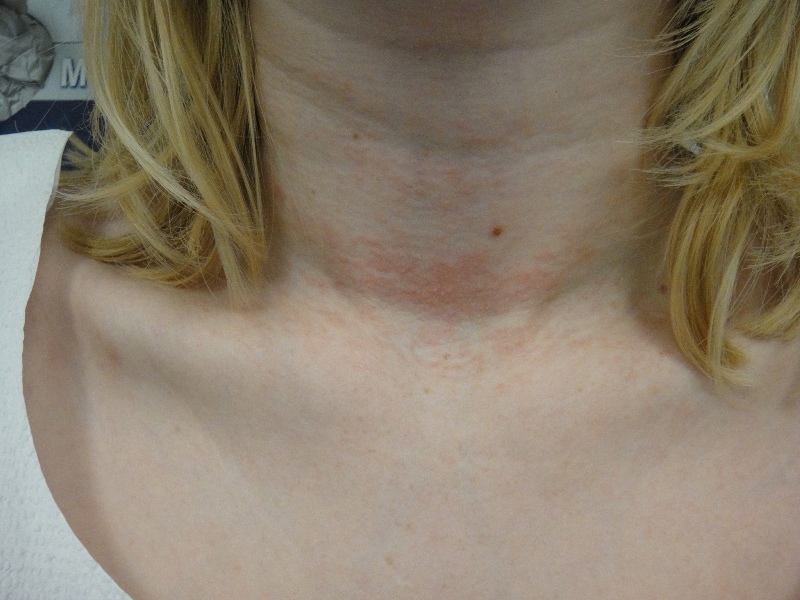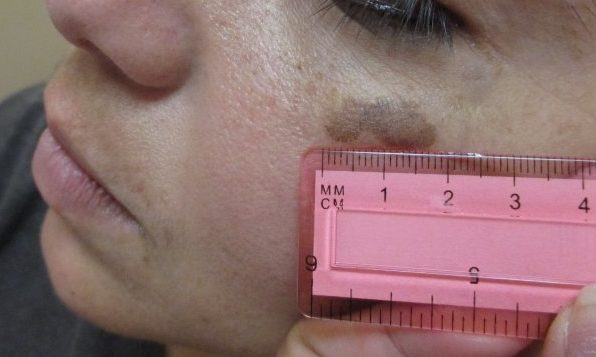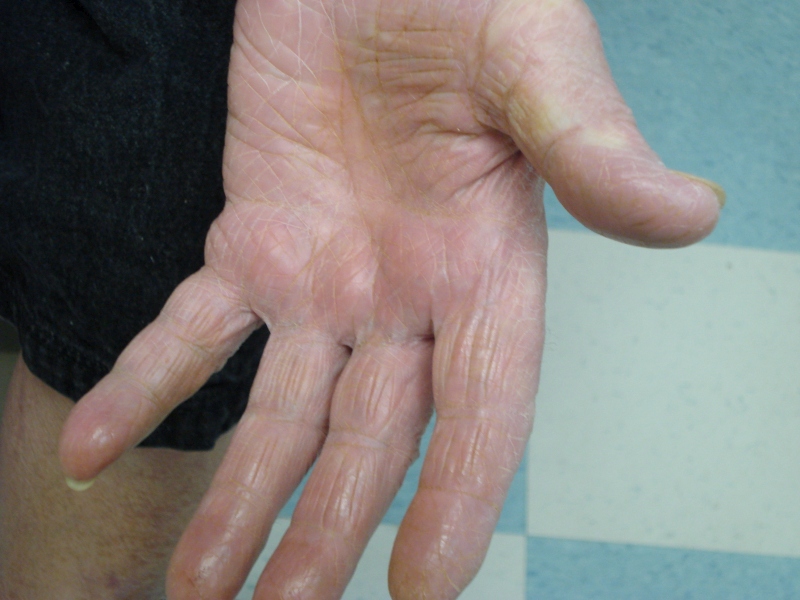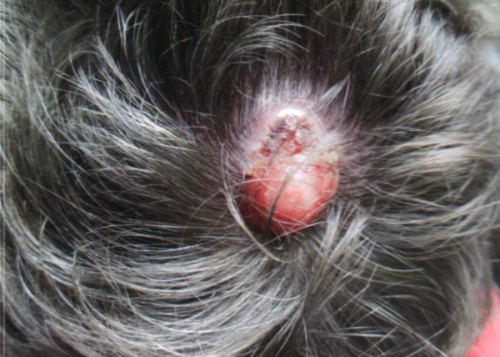CORRECT DIAGNOSIS:
Eruptive Syringomas
DISCUSSION:
Eruptive syringomas were first described by Jacquet and Darier, in 1987, as a rare variant of syringomas. Friedman and Butler proposed a classification of syringomas as four variants: a localized form, a familial form, a form associated with Down syndrome, and a generalized form that encompassed multiple and eruptive syringomas. Historically, syringomas have been described as neoplasms with eccrine duct differentiation. Recently, clinicopathologic observations suggest some syringomas result from autoimmune inflammation that triggers a limited, reactive proliferation of the eccrine ducts and surrounding fibrous tissue. Eruptive syringomas share histological features with syringomas but have a distinct clinical presentation.
Eruptive syringomas appear suddenly and sometimes in successive crops on the neck, chest, axillae, upper arms and periumbilical. Typically, they present in a bilateral, symmetrical distribution, but there have been reports of the unilateral, unilateral nevoid, bathing trunk, and generalized distributions. As opposed to the very common presentation of localized eyelid syringomas, eruptive syringomas present uncommonly, with less than 100 reported cases in the literature. Both entities appear more commonly in women. Eruptive syringomas are generally seen around puberty or in adolescents in contrast to eyelid syringomas, which have a peak incidence between the third and fourth decades. Syringomas tend to be asymptomatic but pruritus has been sometimes associated with eruptive syringomas.
A few familial cases of eruptive syringomas have been reported in the literature. They are also seen in the Nicolau-Balus syndrome, which is characterized by eruptive syringomas, milia, and atrophodermia vermiculata.
TREATMENT:
Surgically, light electrodesiccation with curettage, cryotherapy, scissors excision, dermabrasion, or laser can be used with variable effectiveness. Chemically, topical or systemic retinoids can be used with variable success. Furthermore, it has been reported that the combination of trichloroacetic acid and carbon dioxide laser destruction produces a favorable outcome. Interestingly, a case report using 1% topical atropine in aqueous solution in a case of pruritic eruptive syringomas yielded alleviation of the pruritus and a discrete size reduction of lesions. Topical atropine is believed to be effective due to its ability to inhibit sweat secretion given the eccrine sweat duct differentiation of these tumors. Despite numerous treatment options, effective options are limited since the tumors are located in the dermis and the risk of recurrence is high.
REFERENCES:
Soler-Carrillo, J., et al. (2001). Eruptive syringoma: 27 new cases and a review of the literature. JEADV, 15, 242-246. PMID: 11473294
Chandler, W. M., & Bosenberg, M. W. (2009). Autoimmune acrosyringitis with ductal cysts: reclassification of a case of eruptive syringoma. J Cutan Pathol, 36, 1312-1315. doi:10.1111/j.1600-0560.2009.01057.x. PMID: 19817890
Sanchez, T. S., & Dauden, E. (2001). Eruptive pruritic syringomas: Treatment with topical atropine. J Am Acad Dermatol, 44, 148-149. doi:10.1067/mjd.2001.105481. PMID: 11171182
Frazier, C. C., et al. (2001). The treatment of eruptive syringomas in an African American patient with a combination of trichloroacetic acid and CO2 laser destruction. Dermatol Surg, 27, 489-492. doi:10.1046/j.1524-4725.2001.01222.x. PMID: 11344030




